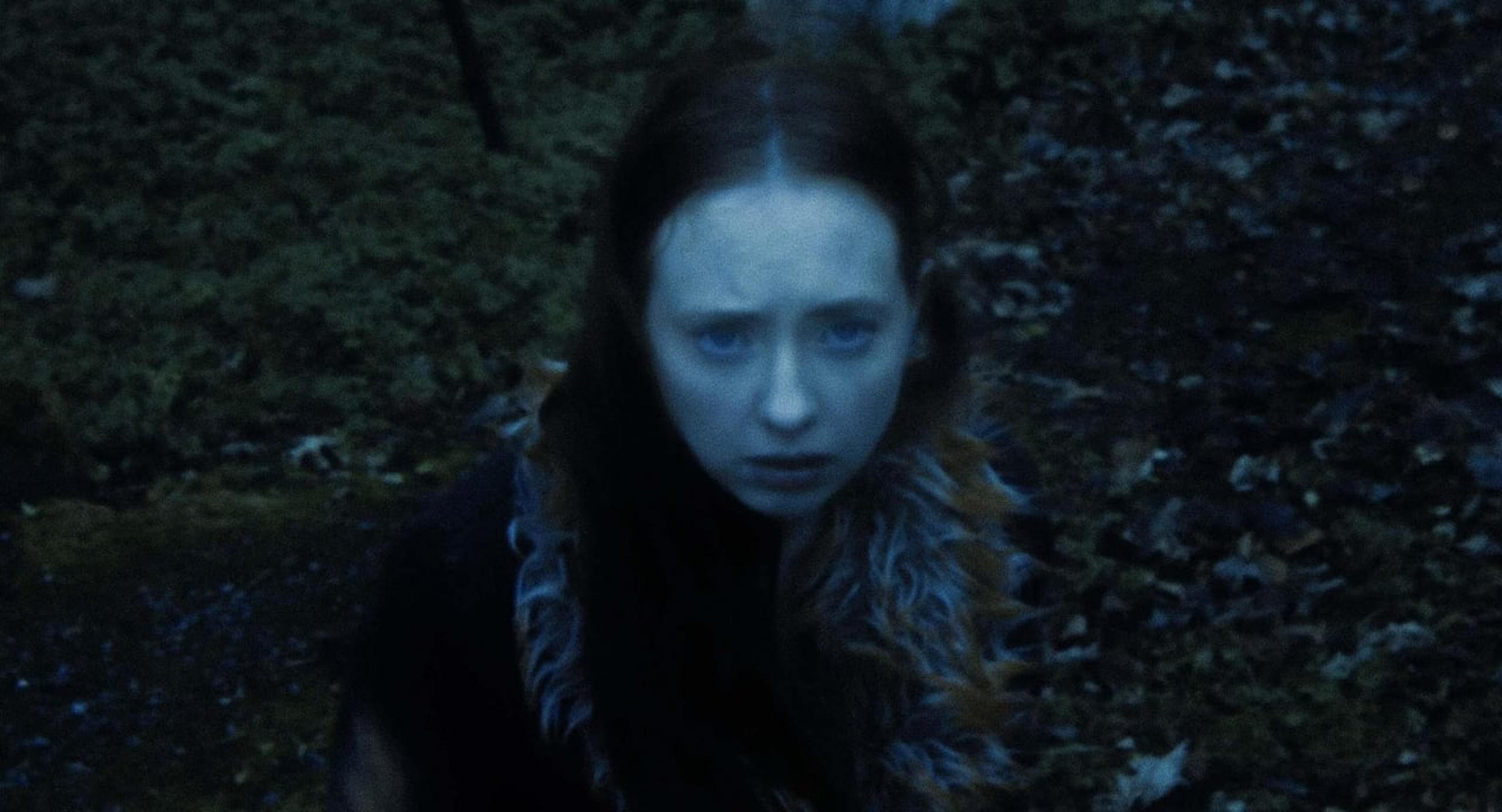Wishes of the Blue Girl – Film Review
Published August 25, 2024

Wishes of the Blue Girl is a mystery drama horror film that invites viewers into a world of eerie solitude and creeping dread. While the film presents an intriguing premise and delivers some genuinely unsettling moments, it ultimately struggles to maintain momentum and coherence, leading to a final product that feels more like a missed opportunity than a fully realized vision.
The film centers on Isabel, portrayed by Niamh Anna, a young woman living alone in a sprawling, yet eerily vacant, house. The story begins with Isabel navigating her life in this empty space, where every shadow and creak seems to harbor a hidden threat. The setting is almost a character in itself, with its vast, echoing rooms and the sense of isolation that permeates every corner. Isabel’s solitude is palpable, and the cinematography captures this beautifully, using wide shots and lingering takes to emphasize her vulnerability in the vast emptiness.
As the narrative unfolds, Isabel begins to experience a series of strange occurrences. Objects move on their own, whispers echo through the halls, and the line between reality and hallucination begins to blur. These moments are where Wishes of the Blue Girl excels, creating an atmosphere thick with tension. Ryan A. Conaill’s direction shines in these scenes, employing a minimalist approach to horror that relies more on suggestion than overt scares. The sound design, in particular, deserves praise, with its use of subtle, unsettling noises that heighten the sense of unease.
Niamh Anna delivers a strong performance as Isabel, effectively conveying a woman teetering on the edge of sanity. Her portrayal is nuanced, capturing both the fragility and the quiet strength of her character. Isabel is a woman haunted by something she cannot understand, and Anna’s performance ensures that the audience feels every ounce of her fear and confusion. However, despite her compelling presence, the script does not give her enough material to work with, leaving much of her character’s backstory and motivations frustratingly vague.
The supporting cast, though limited, also contributes to the film’s eerie tone. Veronica Henley, as Mother, appears primarily in eerie dreamlike sequences. Her presence adds a layer of psychological complexity to the story, hinting at a troubled relationship that may hold the key to understanding Isabel’s current predicament. Henley’s performance is haunting, her portrayal of the mother figure both tender and menacing, a ghostly echo of past traumas that continue to haunt Isabel.
Luis Masters’ role as Julio is underdeveloped, unfortunately. Julio’s character appears to have been intended as a grounding force, someone who could pull Isabel back from the brink, but his inclusion feels more like an afterthought than a vital part of the narrative. This underutilization of a potentially significant character is indicative of the film’s broader issues with pacing and storytelling.
Where Wishes of the Blue Girl falters most is in its narrative structure. The film’s slow-burn approach, while initially effective in building tension, eventually begins to drag. Scenes that should escalate the suspense instead feel repetitive, and the story often meanders without clear direction. The sense of mystery, which should be the driving force of the plot, becomes muddled, with too many questions left unanswered. The film seems to rely on ambiguity as a substitute for depth, but instead of leaving the audience with thought-provoking uncertainties, it risks leaving them simply confused and unsatisfied.
The third act is where these issues become most apparent. As the film approaches its climax, the pace quickens, but instead of a coherent unraveling of the mystery, we are given a series of disjointed and confusing scenes. The final revelation, meant to be a shocking twist, feels underwhelming due to the lack of proper buildup. It’s as though the film is trying to say something profound about grief, memory, or the supernatural, but it never quite manages to articulate its ideas fully.
Visually, Wishes of the Blue Girl is gorgeous. The cinematography, as mentioned earlier, captures the eerie isolation of the house beautifully, and the use of lighting and shadows adds to the film’s unsettling atmosphere. It’s probably one of the best qualities of the film.
In terms of horror, Wishes of the Blue Girl leans heavily on atmosphere rather than traditional scares. There are no jump scares or grotesque imagery; instead, the film aims to disturb the viewer on a psychological level. For some, this approach will be a welcome change from more formulaic horror films, but for others, the lack of visceral fear may leave them feeling disengaged.
Ultimately, Wishes of the Blue Girl is a film that shows potential even if it’s nothing fantastic. Ryan A. Conaill’s direction demonstrates a keen understanding of how to build atmosphere and tension, and the performances, particularly from Niamh Anna and Veronica Henley, are commendable. However, the film’s pacing issues, underdeveloped characters, and muddled narrative prevent it from achieving the emotional and psychological impact it strives for.
For fans of slow-burn horror and atmospheric storytelling, Wishes of the Blue Girl is worth a watch for its mood and performances. But for those seeking a more cohesive and satisfying mystery, the film may leave much to be desired. At its best, it’s a haunting exploration of isolation and fear; at its worst, it’s a frustrating exercise in style over substance.
